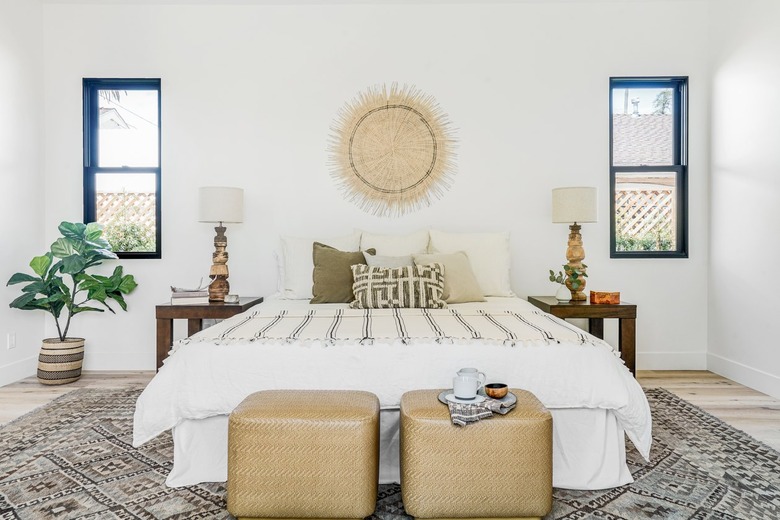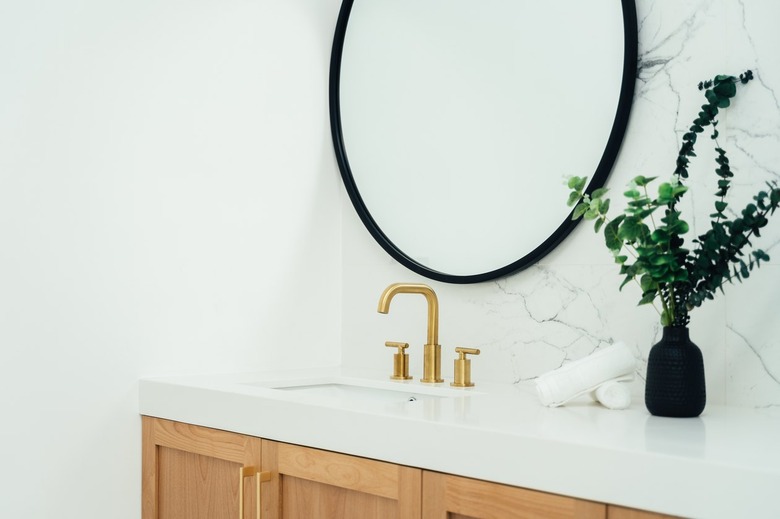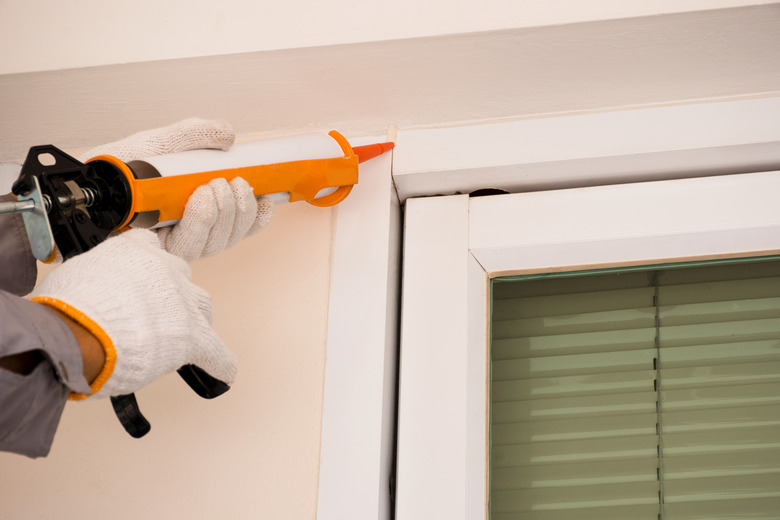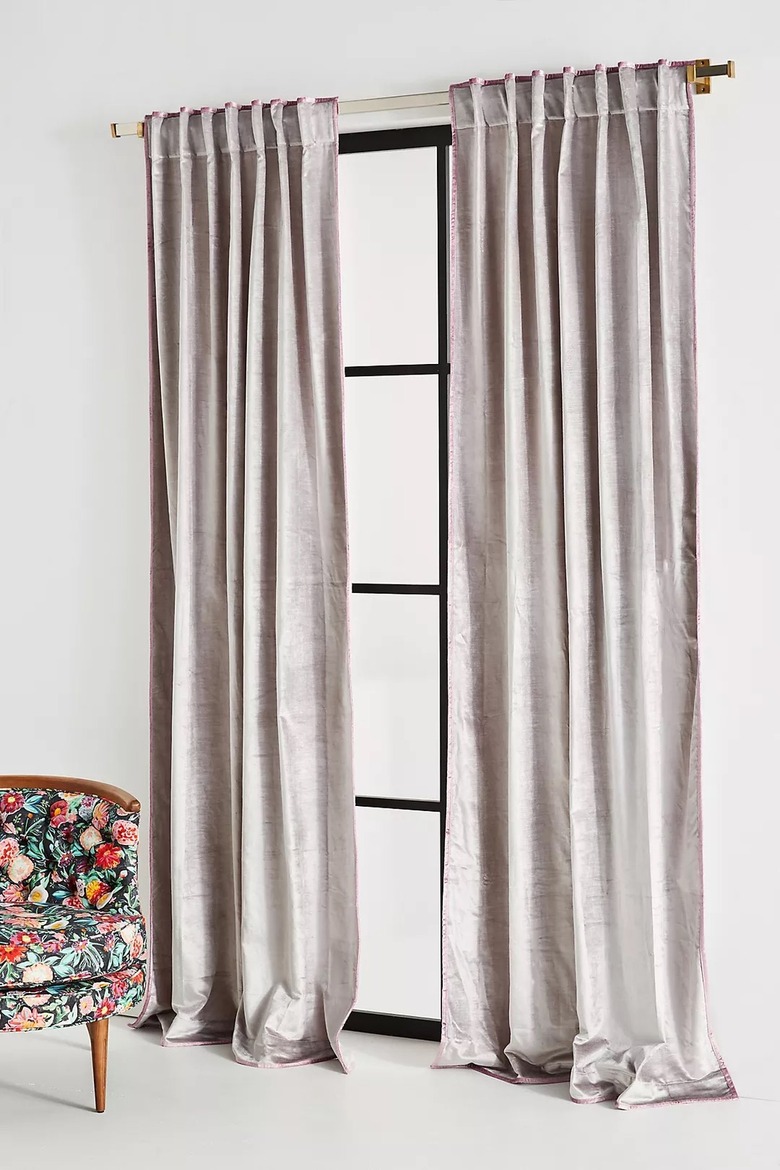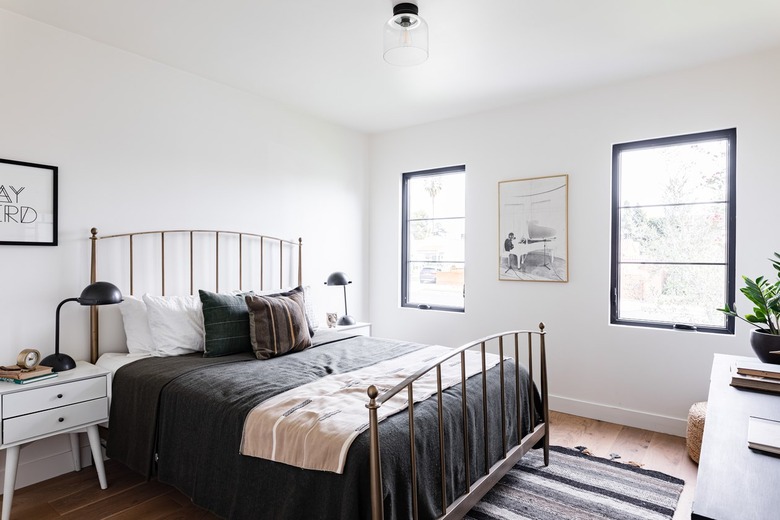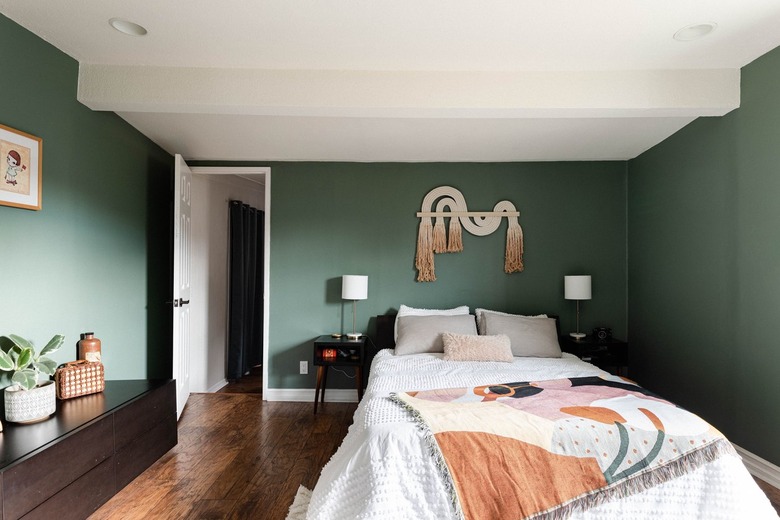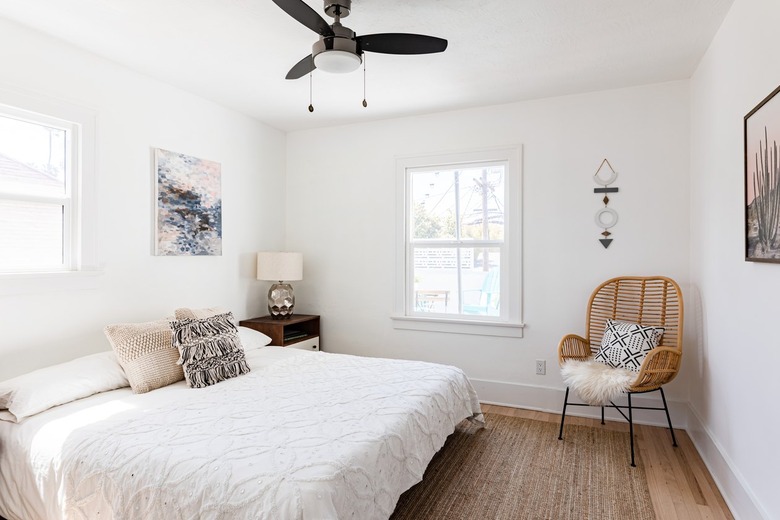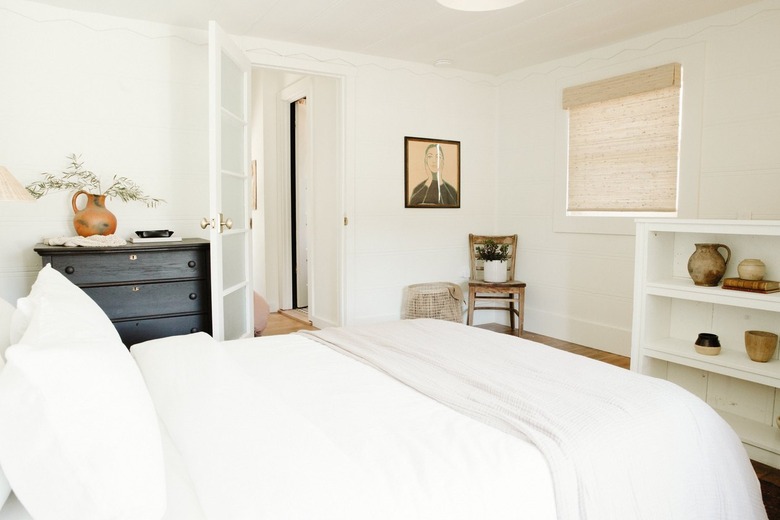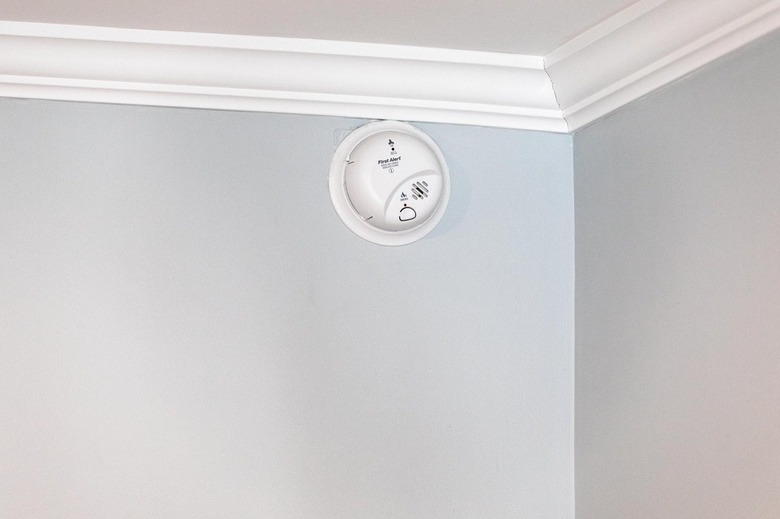8 DIYs That Will Actually Help You Sleep Better At Night
Struggling with sleep? It may be because you have unfinished projects and to-do lists floating through your mind. Of course, loud neighbors could also be to blame as well as bright lights shining through the bedroom window. Whatever the issue, these easy DIY tasks can help you sleep better at night.
1. Fix that leaky faucet.
1. Fix that leaky faucet.
The only thing more annoying than the incessant dripping of a leaky faucet is listening to it when you're trying to sleep. Fortunately, fixing the issue is an easy job.
First, unscrew the end of the faucet to remove and replace the aerator. If your faucet uses cartridges, remove the setscrew on each handle, pull out the cartridge (the plastic piece that controls water flow), and replace it with a new one. If you have a compression faucet, unscrew the handle and remove the valve stem and the valve seat (the brass or plastic pieces directly underneath the faucet). Purchase a replacement kit and replace the valve stem and the valve seat.
This is all much easier than it sounds, but if you do get stuck, the user manual for your faucet will detail the process for your particular model.
Tip
Not sure if you have a compression or cartridge? An easy way to tell is how far the handles can turn. Cartridge faucet handles can only turn 90 degrees whereas compression faucets can turn a full 360 degrees.
2. Take care of drafts.
2. Take care of drafts.
Climbing into bed on a cold winter night should feel warm and cozy, but it may not if your bed sits near a drafty window. To reclaim your coziness, run a bead of caulk around doors and windows in your home to seal cracks and block drafts. You'll stay warmer in the winter, and your cooling system won't have to work as hard in the summer. That means reducing drafts and the need to lay awake worrying about the size of your energy bills.
3. Hang some blackout curtains.
3. Hang some blackout curtains.
Perhaps there is a bright streetlight right outside your bedroom window, or maybe you work nights and need to sleep during the day when it's sunny outside. Either way, blackout curtains can block the light to darken the room and help you sleep better. A thick curtain can also help block drafts and outside noises.
When hanging blackout curtains, use a sturdy curtain rod, as some of these curtains are quite heavy. To block as much light as possible, make sure you hang the curtain rod a few inches above the window and a few inches beyond each side of the window. If you don't want things dark all the time, layer your blackout curtain with sheers or a blind using a double curtain rod so you can let the light in when you want while still maintaining some privacy.
4. Soundproof your room.
4. Soundproof your room.
Sometimes, life gets noisy at inconvenient times. You can't convince the world around you to be quiet whenever you go to sleep, but you can minimize the amount of outside noise that reaches you. The trick is to remember that objects, particularly soft ones, absorb sound well. Begin the soundproofing process by rearranging your bedroom furniture. Put dressers, armoires, and other large pieces against outside walls or walls you share with a noisy neighbor to help absorb the sound.
Lay a carpet in your room, even if it's only an area rug, and hang curtains in your windows. If there is a gap under your bedroom door, install weatherstripping to help keep out unwanted sounds. Sound-reducing wallpaper is also an option, as is covering outside sounds with your own white noise machine and other similar devices.
Perhaps you're dealing with a more serious issue, like the kid in the apartment next door getting a brand-new drum set for Christmas. In this case, you may want to consider a bit more hardcore soundproofing, such as acoustic wall panels or ceiling tiles.
5. Paint your bedroom.
5. Paint your bedroom.
Psychologists (and marketers) know that color affects us, and its impact doesn't stop at the bedroom door. Studies have shown that painting your bedroom in mellow, relaxing colors improves sleep quality. People who sleep in a blue bedroom get an average of 7 hours and 52 minutes of sleep at night. Earth tones and muted greens also improved sleep, as did grays, beige, and coral when tested. Vibrant reds and yellows, however, seem to have the opposite effect.
6. Install a ceiling fan.
6. Install a ceiling fan.
Most people sleep better in a cooler room than a warmer one. To help keep yourself cool enough to sleep, consider installing a ceiling fan in your bedroom. This will keep air circulating and help you stay cooler while you sleep. If you're concerned you might get cold during the night, purchase a fan with a remote control and keep it on your bedside table. This way, you can adjust your fan speed or turn it off if you need to without getting out of bed.
7. Clear out the clutter.
7. Clear out the clutter.
Don't just take your mom's word for it: Cleaning up your bedroom is actually purposeful. According to a 2017 study, clutter in a bedroom can interfere with sleep quality due to rumination or anxiety — and tidying up can be just the trick you need to get better sleep.
Need to clear the clutter in your bedroom? Take a look around your room for ways you can add storage. Maybe it's time to build a custom closet organizer or hang a few shelves on the wall. Consider building a platform for your bed so you can hide things underneath it. There are tons of plans online for DIY shelving, closet organizers, and other clever storage ideas to make your bedroom a more beautiful, restful space.
8. Check your smoke alarm batteries.
8. Check your smoke alarm batteries.
If you haven't already done so, now is the time to install a carbon monoxide detector on every floor of your house. Each floor of your home and each bedroom should have a smoke detector as well. Press the test button on your alarms once a month and replace the batteries if they don't emit a beep during testing. Replace alarms with 10-year batteries entirely if they fail a test. You'll sleep better knowing that you and your family will be alerted to danger if something goes wrong — and will also avoid waking up at 3 a.m. when the alarm inevitably starts to chirp.
References
- Consumer Reports: Your Smoke Detectors Can Save Your Life. It's Time to Start Taking Care of Them.
- YouTube: Lowe's Home Improvemet – How To Fix A Dripping or Leaky Double Handle Faucet
- YouTube: Mattress Clarity – The Simplest Way to Hang Your Blackout Curtains – Step-by-Step Guide!
- Tomorrow Magazine: How To Soundproof A Bedroom – Simple, Step By Step Guide
